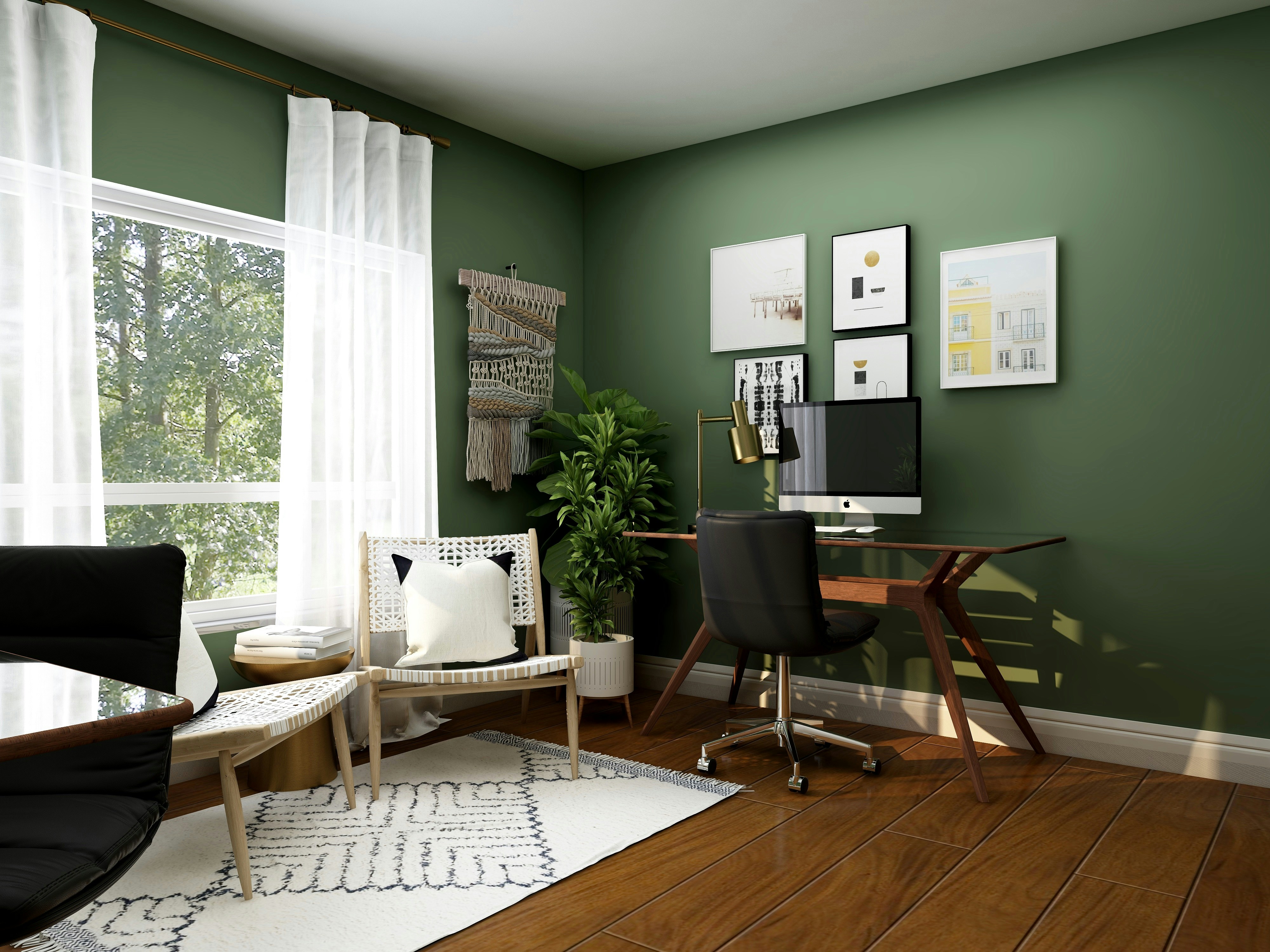
Transform Your Home Office With Ergonomic Tweaks for All-Day Energy
Creating a workspace that supports your energy and focus starts with a few simple changes. A cluttered desk, harsh lighting, and an uncomfortable chair can drain your motivation and make it hard to concentrate. Instead of committing to a complete overhaul, look for minor adjustments that can make a noticeable difference. Adjust your chair for better support, clear unnecessary items from your work surface, and bring in a desk lamp or add softer bulbs. These thoughtful updates help you stay comfortable and productive throughout the day, proving that even small changes can lead to a more inviting and energizing work environment.
Advertisement
With a few adjustments, you’ll move less, sit better, and stay alert longer. This guide dives straight into practical fixes you can apply today. Let’s transform your home office into a stronghold of productivity and well-being.
Optimize Your Desk Setup
Your desk should support your tasks and your body. Aim for a surface height that lets your forearms rest parallel to the floor. Clear clutter to make room for focused work.
Choose a stable desk with enough depth to place a monitor at arm’s length. A sturdy surface prevents wobble and keeps gadgets in place when you type.
- Height: Keep the desktop at 27–30 inches or match it to your elbow height.
- Depth: Allow 20–30 inches of workspace between you and the monitor.
- Surface: Go for solid wood or metal for minimal flex and long-term durability.
- Organization: Use cable clips, trays, and drawer units to keep tools at hand.
- Personal Touch: Add a plant or photo to boost mood without crowding your work area.
Choose the Right Chair
Your chair can make or break long work sessions. Look for adjustable features that fit your body. A chair that adapts to you reduces muscle strain and fatigue.
Try out models when you can. Sit for a few minutes and lean back. A quality chair supports your spine’s natural curve and holds your lower back in place.
Key features to inspect include:
- Lumbar support: A firm cushion that follows the lower spine’s shape.
- Seat depth: Adjusts to fit your thigh length without pressure behind the knees.
- Armrests: Should rise or fall to let shoulders relax and elbows bend at 90 degrees.
- Swivel base: Allows you to reach all corners of the desk without twisting your back.
- Material: Breathable mesh or high-density foam keeps you cool.
Position Your Monitor and Keyboard
Proper screen alignment stops neck pain and eye strain. Your eyes should hit the top third of the monitor when you look straight ahead. A misaligned display forces long-term damage.
Follow these steps to set up your display and keyboard:
- Place the monitor at least an arm’s length away (20–30 inches).
- Raise or lower the monitor so its top edge sits at eye level.
- Angle the screen back 10–20 degrees to reduce glare.
- Position the keyboard just below elbow height to keep wrists straight.
- Use a wrist rest or gel pad to cushion hands when typing.
If you need dual monitors, center the primary screen directly in front of you and angle the secondary at 30 degrees. Doing so reduces head turns by 50% and cuts neck strain.
Incorporate Movement Breaks
Sitting still drains energy and slows metabolism. Stand up, stretch, or walk for a minute every 30–45 minutes. Short breaks improve circulation and sharpen your focus.
Use simple prompts to remind yourself to move. A timer or a stretch app can prompt a quick set of movements. Changing posture often prevents stiffness and pain.
- Desk stretches: Shoulder rolls, neck tilts, and wrist circles.
- Micro-walks: Pace during phone calls or meetings.
- Standing desk: Switch between sitting and standing every hour.
- Balance board: Add slight motion to standing periods for core activation.
- Mini workouts: Do five squats or calf raises before returning to work.
Enhance Lighting and Air Quality
Bright spaces help keep you alert. Aim for 500–750 lux at your desk surface to cut eye strain by up to 40%. Combine natural daylight with LED task lighting for a balanced environment.
Position your desk near a window to harness sunlight. Use an adjustable desk lamp with a 3000–4000K color temperature. This range feels close to daylight and reduces blue-light fatigue.
Air quality also influences energy levels. Improving fresh airflow can boost productivity by 15%. Open a window when weather permits or add an air purifier with HEPA filters.
- Greenery: Place small, low-maintenance plants like snake plants or pothos.
- Diffuser: Use essential oils such as peppermint or eucalyptus for alertness.
- Humidity monitor: Keep moisture between 30–50% to avoid drowsiness or dry air.
Small changes add up, so adjust your setup to improve focus and stamina. This helps you work more efficiently and reduces fatigue.
Advertisement